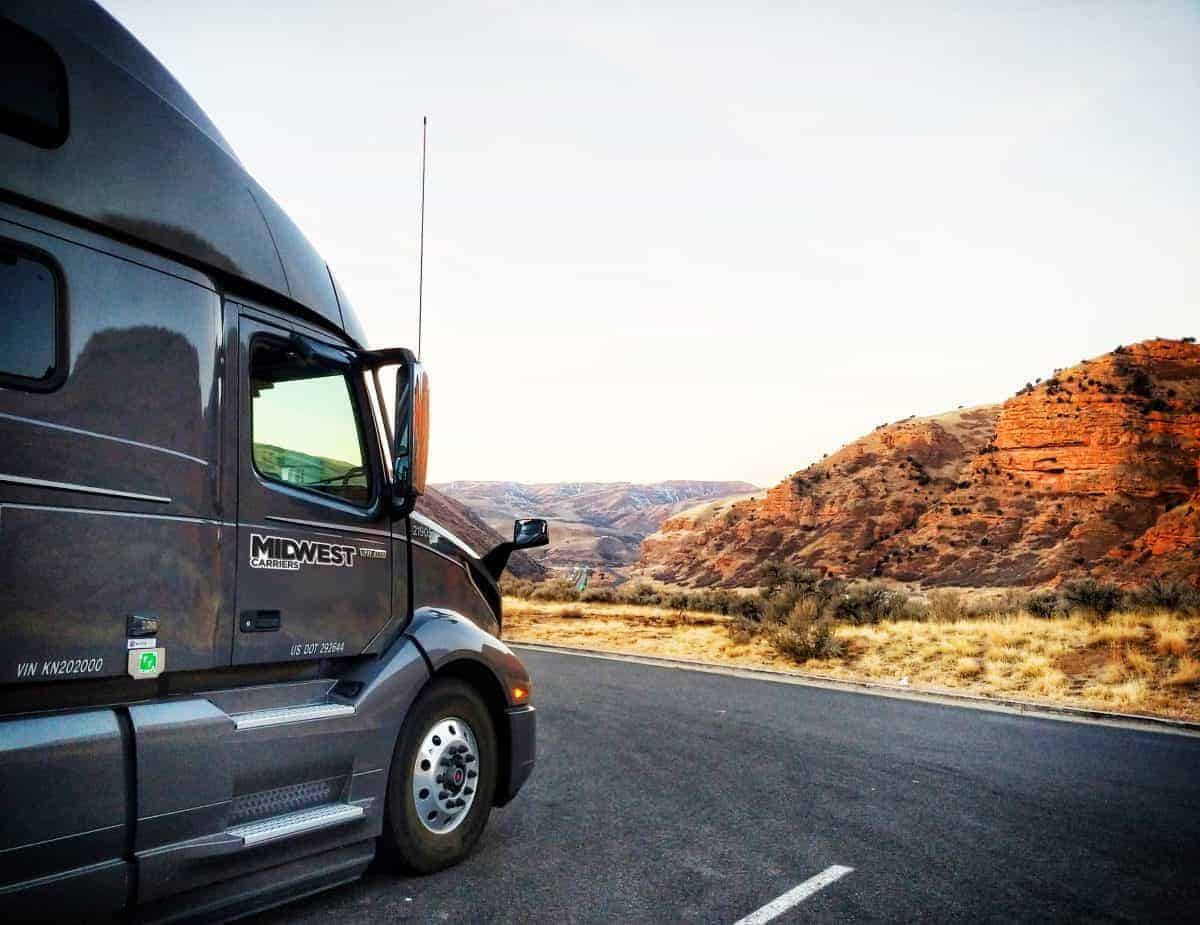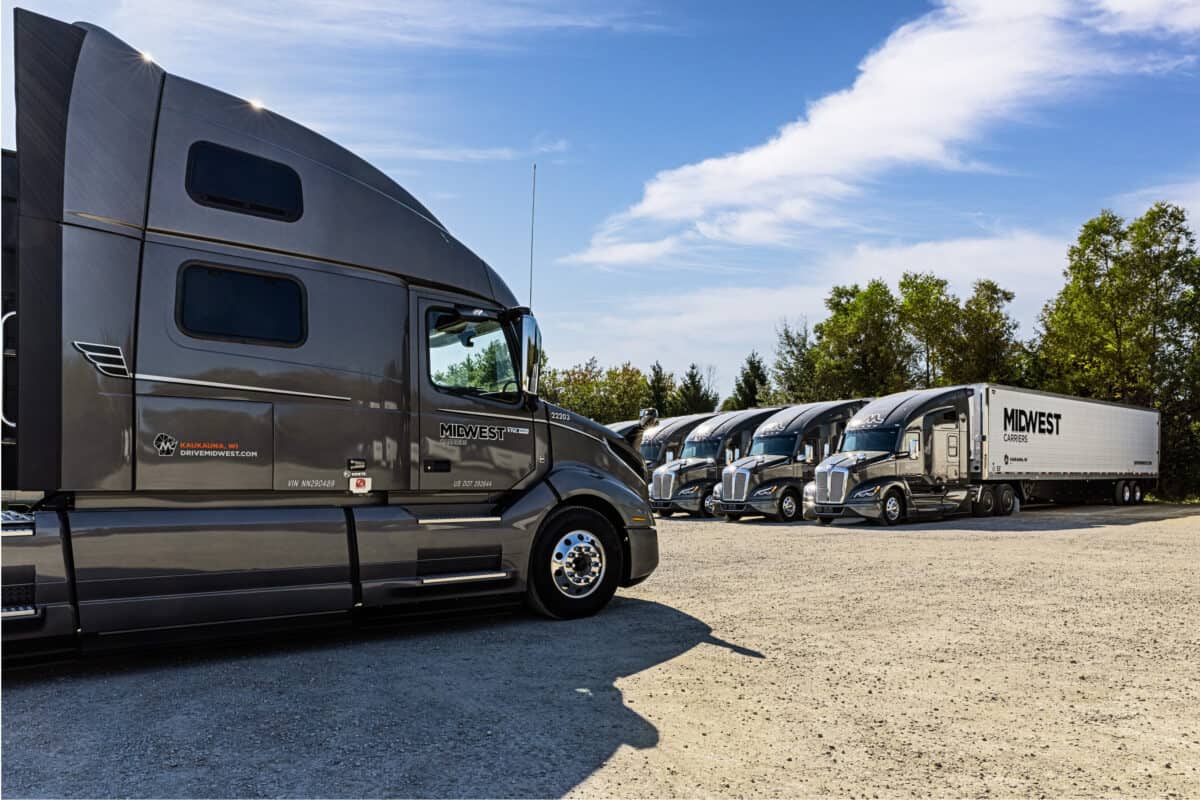Preparation is a prominent trait in successful truck drivers. The ability to effectively predict time spent driving, plan strategic stops, maintain a healthy sleeping schedule and arrive at drop-off locations on time helps drivers navigate the challenges of their jobs without stress.
Taking the time to plan for your over-the-road trip before starting will save you time in the long-run. While it takes initial time investment, it will pay dividends for your schedule, stress levels and your customer’s delivery satisfaction.
Trip planning for truck drivers can help:
- Set you up for success on the road.
- Prevent delays.
- Lessen frustration.
- Clarify expectations.
- Strengthen driver-customer relationships.
Drivers should take into account various factors that can affect their journeys—parking, weather, traffic, fuel stops and more.
Start-to-Finish Checklist For Your Next Trip
It can be helpful to keep handy a step-by-step guide for your next trip. Before embarking on your journey, follow this checklist:
- Review load assignment: Make sure you have all necessary information—including shipper/receiver address, appointment times and trailer number.
- Plan your route: Estimate how long your trip will take by dividing total mileage by miles per hour. Factor in unique circumstances along your route that could cause delays.
- Identify parking for breaks and sleeping: Find safe, comfortable spots where you can park your truck for the required 30-minute breaks and sleep time. Have a backup plan just in case.
- Check the weather: Take a look at the forecasts along your route to plan for possible inclement conditions. Take breaks or shut down early in severe weather.
- Maximize fuel economy: Seek the most cost-effective options for fuel along your route. This can be checked on a daily basis using the Midwest Carriers app for drivers.
- Consider traffic: Before your trip, consider whether you’ll be passing through any major hubs during rush-hour traffic. This can alter when you decide to drive through those areas, or it can inspire you to explore alternate routes. If you must drive through these areas during busy times, assume you’ll need extra time in your plan.
- Adjust along the way: Unforeseen circumstances will come up during your journey. Make sure you take time daily to re-examine your plan and make adjustments.
Your breaks that are required by law should coincide with your cost-effective fuel stops. Once you know when to take breaks, you can use your Midwest Carriers app to find the cheapest fuel in the surrounding area—maximizing your time and money.
Prevent Delays With Route Planning
Efficient planning tactics can help truck drivers avoid unnecessary delays. The first step in truck driver route planning is also the most important: reviewing and understanding your load assignment.
What should truck drivers check before leaving? Make sure you have the shipper/receiver address, appointment times, trailer number, type of freight and weight of your load.
After storing this key information, you can begin to make plans for your entire route, from beginning to end. Craft a tentative plan that includes how long your trip will take. You can calculate how long your trip will take in driving time by dividing your trip’s overall mileage by your average miles per hour (while you might drive 60 mph on the highway, it’s unlikely that will be your average speed for the duration of the trip). For example, a 600-mile trip at 50 mph would take 12 hours. Using a modest miles per hour estimate provides you with cushion time for unexpected lags.
In advance of pulling out of the lot, take a look at the entire route, identifying construction and tricky terrain, as well as considering where you’ll be on the road when rush-hour picks up in the big cities. Factoring these circumstances into your plan will make sure you’re prepared for whatever lies ahead.
You should also prepare for the amount of fuel stops you’ll take on the road. You can determine when fuel stops will be needed by multiplying the size of your gas tank by the average miles per gallon for truck drivers. For example, if your truck stores 125 gallons, that amount multiplied by the average 5.6 mpg would equal 700 miles before empty. Plan to make stops before you have to, with that number in mind.
Find Cheaper Fuel to Save Money
When planning for your trip, you should schedule fuel breaks and strategize to keep your fuel costs to a minimum. Increased fuel efficiency is often the result of careful planning.
The Midwest Carriers phone app allows truck drivers to easily identify and select the lowest-priced fuel options along their routes. As a driver, you are keeping close tabs on your average mpg’s and as a result, are able to anticipate when fuel stops will be required.
At Midwest Carriers, our OTR drivers have the ability to earn monthly performances bonuses (up to $750!) driving safely, paying attention to their fuel efficiency and prioritizing those cheaper stops for fuel. With those kinds of incentives, taking the time to plan your trip is worth the effort.
How Often do Truck Drivers Have to Take a Break?

Breaks are essential for truck drivers’ well-being, productivity and safety on the job (plus, it’s the law!). When preparing for your over-the-road journey, you should factor breaks into your daily schedules at comfortable stops along your routes. Truckers cannot drive longer than eight consecutive hours without taking a 30-minute break, according to law.
These breaks can be used for:
- Showering.
- Eating/Drinking.
- Napping.
- Calling Family/Friends.
- Exercising/Stretching.
Where can Truckers Park to Sleep on Trips?
Just like breaks, getting enough sleep is integral for driver wellness. Feeling well-rested helps drivers stay alert, productive and safe on the road—benefiting them, fellow drivers and shippers or receivers expecting goods.
Truck drivers should take time before trips to identify route locations fit for parking and safe for sleeping. This can help you identify your final destination for each day and avoid the last-minute stress of figuring out where to sleep when you’re already tired from the day’s drive.
Prioritize locations along the route that are:
- Safe: Do you feel that you and your load are secure?
- Large: Do you anticipate there will be enough room for you and your truck and trailer?
- Comfortable: Are there amenities at the location, like bathrooms, food and drink?
Evaluate whether your parking spots are free or require paid reservations, at a truck stop or somewhere else. In some cases, you may be able to ask your shipper or receiver if you can park at their locations.

Advice for Truck Driving in Bad Weather
Stay ahead of hazardous weather conditions by checking forecasts daily. Check the weather radar for your entire route—not just the conditions in your current or final destinations. Especially when traveling through the mountains or in coastal locations, the weather you experience en route can differ significantly from where you start or end.
If weather forecasts show dangerous conditions, it’s time to consider adjusting your route, schedule or both. Otherwise, you should adjust your speed significantly, and schedule accordingly. At Midwest Carriers, we encourage our drivers to take necessary steps to ensure they feel comfortable and safe the entire time they’re on the road.
In severe weather circumstances, shut down early if driving will be dangerous. In this case, notify your dispatch team that weather will affect your schedule and make the necessary logistics adjustments to accommodate the unexpected changes.
Take Your Next Trip With Us
At Midwest Carriers, we help with trip planning for truck drivers on our team—including a 24/7 operations team to support employees. Learn more about our job opportunities.
"*" indicates required fields
